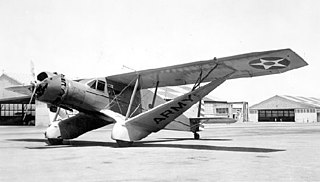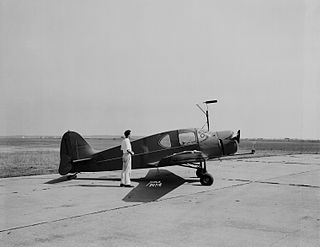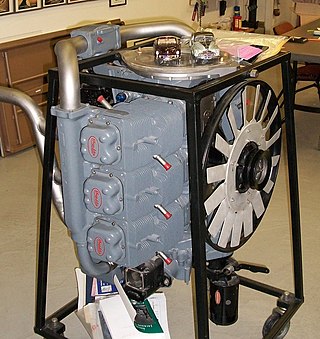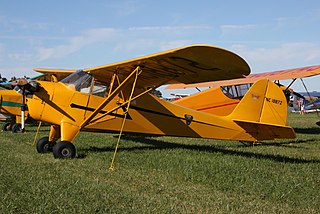
The Piper PA-24 Comanche is an American single-engine, low-wing, all-metal monoplane of semimonocoque construction with tricycle retractable landing gear and four or six seats. The Comanche was designed and built by Piper Aircraft and first flew on May 24, 1956. Together with the PA-30 and PA-39 Twin Comanches, it made up the core of Piper's lineup until 1972, when the production lines for both aircraft were destroyed in the 1972 Lock Haven flood.

The PA-25 Pawnee is an agricultural aircraft produced by Piper Aircraft between 1959 and 1981. It remains a widely used aircraft in agricultural spraying and is also used as a tow plane, or tug, for launching gliders or for towing banners. In 1988, the design rights and support responsibility were sold to Latino Americana de Aviación of Argentina.

The Beechcraft Musketeer is a family of single-engined, low-wing, light aircraft that was produced by Beechcraft. The line includes the Model 19 Musketeer Sport, the Model 23 Musketeer, Custom and Sundowner, the Model 23-24 Musketeer Super III, the retractable gear Model 24R Sierra and the military CT-134 Musketeer.

The Stinson 108 is a popular single-engine, four-seat, light general aviation aircraft produced by the Stinson division of the American airplane company Consolidated Vultee, from immediately after World War II to 1950. The 108 was developed from the prewar Model 10A Voyager.

The Bellanca Aircruiser and Airbus were high-wing, single-engine aircraft built by Bellanca Aircraft Corporation of New Castle, Delaware. The aircraft was built as a "workhorse" intended for use as a passenger or cargo aircraft. It was available with wheels, floats or skis. The aircraft was powered by either a Wright Cyclone or Pratt and Whitney Hornet engine. The Airbus and Aircruiser served as both commercial and military transports.

The Bellanca 14-7 Cruisair and its successors were a family of single-engined light aircraft manufactured in the United States from the mid-1930s onwards.

The Citabria is a light single-engine, two-seat, fixed conventional gear airplane which entered production in the United States in 1964. Designed for flight training, utility and personal use, it is capable of sustaining aerobatic stresses from +5g to -2g. Its name, "airbatic" backwards, reflects this.

The American Champion 8KCAB Decathlon and Super Decathlon are two-seat fixed conventional gear light airplanes designed for flight training and personal use and capable of sustaining aerobatic stresses between +6g and −5g. The Decathlon entered production in the United States in 1970 as a more powerful and stronger complement to the American Champion Citabria line of aircraft.

The Aeronca 15AC Sedan is a four-seat, fixed conventional gear light airplane which was produced by Aeronca Aircraft between 1948 and 1951. Designed for personal use, the Sedan also found applications in utility roles including bush flying. The Sedan was the last design that Aeronca put into production and was the largest aircraft produced by the company.

The Bellanca Viking and Super Viking are a series of single-engine, four-seat, high performance, retractable gear aircraft manufactured in the USA during the 1960s and 1970s. The aircraft developed through modifications of classic designs by the aviation pioneer Giuseppe Bellanca. A total of 1,356 Vikings have been produced with most production between 1968 and 1975.

The Franklin O-335 was an American air-cooled aircraft engine of the 1940s. The engine was of six-cylinder, horizontally-opposed layout and displaced 335 cu in (5.5 L). The power output of later variants was 225 hp (168 kW).

The Aeronca Model K Scout is an American light airplane first marketed in 1937, and was the true successor to the popular C-2/C-3 line.

The Bartlett LC-13A Zephyr 150 was a United States light civil aircraft built in the 1940s. It was a mid-wing braced monoplane of conventional design with side-by-side seating for two and fixed, tailwheel undercarriage. It was originally marketed as the Babcock LC-13 by its original manufacturer, then as the Taubman LC-13 when the Babcock Airplane Corporation was acquired by Taubman Aircraft. The rights were finally acquired by Bartlett Aircraft in 1941, but plans to mass-produce it were halted by the outbreak of World War II. There was a brief attempt to revive the design at the end of the war, but nothing came of this.

The Bellanca 31-40 Senior Pacemaker and its derivatives were a family of a six- and eight-seat utility aircraft built in the United States in the late 1930s. They were the final revision of the original late 1920s Wright-Bellanca WB-2 design. The model numbers used by Bellanca in this period reflected the wing area and engine horsepower, each divided by ten. Like their predecessors, these were high-wing braced monoplanes with conventional tailwheel undercarriage.

The Bellanca 77-140 Bomber was a bomber aircraft built in small numbers in the United States in the 1930s. It was a derivative of Bellanca's successful Aircruiser civil transport in which the Aircruiser's single, nose-mounted engine was replaced by twin engines on the upper wing. The United States military were not interested in the type, but the Colombian Air Force bought a small number, including a float-equipped version dubbed the 77-320 Junior. This version also differed from the landplane in having a fully enclosed nose turret in place of the open turret of the 77-140.

The Bellanca 14-7 Junior and its successors were a family of light aircraft manufactured in the United States by Bellanca Aircraft Corporation shortly before World War II. They were followed post-war by the Bellanca 14-13 and its derivatives.

The Rockwell Commander 112 is an American four-seat single-engined general aviation aircraft designed and built by North American Rockwell starting in 1972. In 1976, they introduced the turbocharged version 112TC and mounting a larger engine with other minor improvements they introduced the Rockwell Commander 114. A total of approximately 1,300 examples of all models were produced before the production line shut down in 1980. In 1981, the type certificate owner was Gulfstream Aerospace, but that company had no interest in single-engine piston production.
The Wittman Big X is a four seat high wing variant of the Wittman Buttercup. The aircraft received serious attention from both Fairchild Aircraft, and Cessna Aircraft in the post World War II aviation boom.

The Aeronca K series, Aeronca Chief, Aeronca Super Chief, Aeronca Tandem, Aeronca Scout, Aeronca Sea Scout, Aeronca Champion and Aeronca Defender were a family of American high-winged light touring aircraft, designed and built starting in the late 1930s by Aeronca Aircraft.
The Taylorcraft 15, which entered production as the 15A Tourist was an American-built general-purpose high-wing monoplane of the 1950s. It was a four-seat development of the two-seat Taylorcraft BC, fitted with a more powerful engine.





















